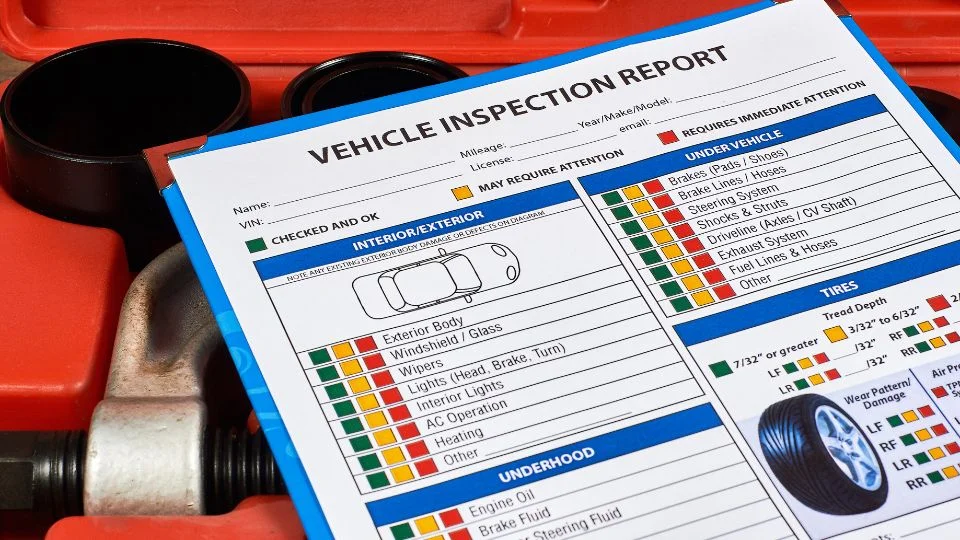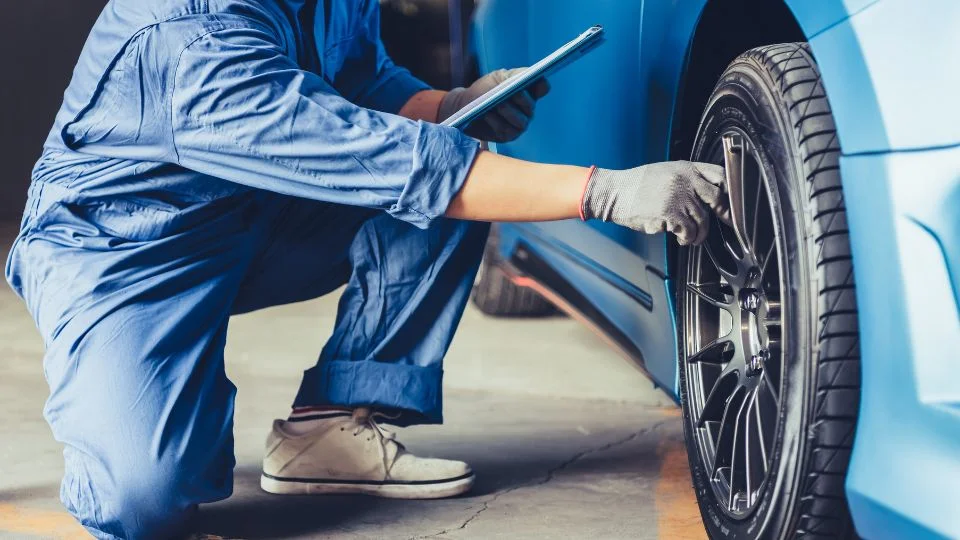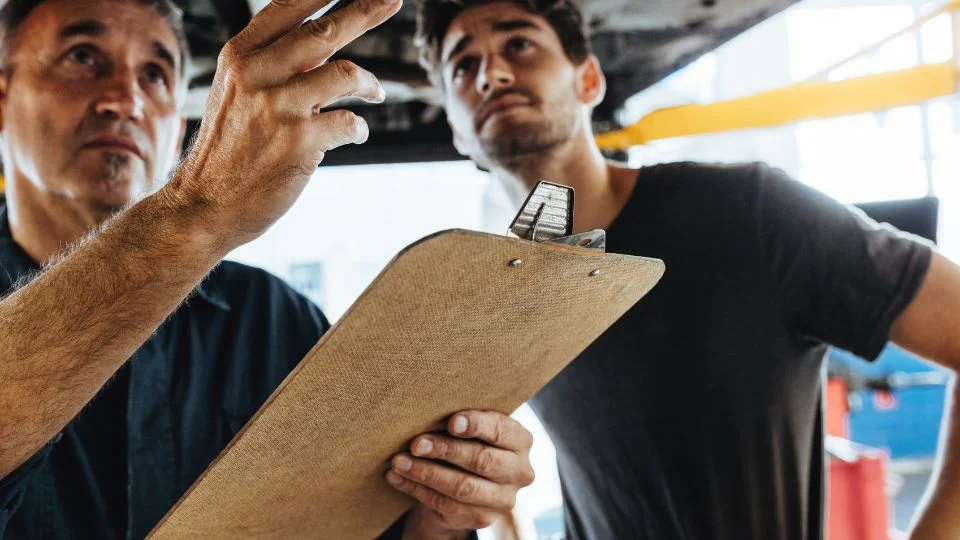Getting your vehicle inspected is an essential requirement in Texas, ensuring that it meets the state’s safety and emissions standards. But how much does a Texas state vehicle inspection cost? Look no further than Kwik Kar Richardson for answers. As a reputable auto repair shop, we understand the importance of a thorough inspection without breaking the bank.
When it comes to determining the cost of a Texas state vehicle inspection, factors such as the type of vehicle, location, and any additional services required can influence the price. At Kwik Kar Richardson, we offer competitive pricing that keeps your budget in mind. Our certified technicians perform comprehensive inspections to ensure your vehicle is roadworthy and in compliance with state regulations.
With our state-of-the-art equipment and expertise, we provide efficient inspections and prompt service, saving you time and money. Customer satisfaction is our top priority, and we strive to make the inspection process as seamless as possible. Trust Kwik Kar Richardson for reliable and affordable Texas state vehicle inspections. Contact us today to schedule your inspection and drive with peace of mind on Texas roads.

To ensure the safety of drivers and the environment, the state of Texas requires all vehicles to undergo an annual inspection. The Texas Department of Public Safety (DPS) oversees the inspection program, which includes both safety and emissions components. During the inspection, certified technicians thoroughly examine various aspects of your vehicle to ensure it meets the state’s standards.
The safety component of the inspection focuses on items such as brakes, tires, headlights, turn signals, seat belts, and mirrors. The emissions component, on the other hand, checks the vehicle’s exhaust system and emissions control devices to ensure they are functioning properly and not emitting excessive pollutants.
It’s important to note that different counties in Texas have additional requirements for emissions testing. These counties include El Paso, Travis, Williamson, and Harris, among others. If your vehicle is registered in one of these counties, it must meet the specified emissions standards in addition to the state’s requirements.

A Texas state vehicle inspection is a comprehensive process that evaluates various components of your vehicle to ensure it meets safety and emissions standards. Here are some of the key items that are checked during the inspection:
These are just a few examples of the components that are checked during a Texas state vehicle inspection. It’s important to remember that the inspection is thorough and covers various aspects of your vehicle to ensure it meets the state’s safety and emissions standards.

When it comes to the cost of a Texas state vehicle inspection, several factors can influence the final price. Acquiring a grasp of these variables can assist in budgeting effectively and empowering informed decision-making. Here are some key factors that can affect the cost of a Texas state vehicle inspection:
It’s worth noting that while the state sets the maximum inspection fee, individual inspection stations have the flexibility to set their own prices within that range. Therefore, it’s always a good idea to compare prices and services offered by different inspection stations to find the best value for your money.
At Kwik Kar Richardson, we understand the importance of affordable vehicle inspections. We offer competitive pricing while maintaining the highest standards of quality and service. Our goal is to provide thorough inspections without breaking the bank, ensuring your vehicle meets all the necessary requirements.
To get a Texas state vehicle inspection, you can visit any authorized inspection station in the state. These inspection stations are certified by the Texas Department of Public Safety (DPS) to perform inspections and issue inspection stickers. Here are a few options for getting your vehicle inspected:
When choosing an inspection station, it’s important to consider factors such as reputation, experience, and customer reviews. Look for a station that is known for providing reliable and efficient inspections, ensuring your vehicle is roadworthy and in compliance with state regulations.

Passing a Texas state vehicle inspection is essential to ensure your vehicle meets the state’s safety and emissions standards. Here are some tips to help you prepare for your inspection and increase your chances of passing:
By following these tips and addressing any potential issues before your inspection, you can increase your chances of passing and avoid the inconvenience of a failed inspection.

A failed Texas state vehicle inspection can be frustrating, but it’s essential to address any issues promptly to ensure your vehicle meets the state’s safety and emissions standards. Here are some common reasons why vehicles fail inspections:
If your vehicle fails the inspection, the inspection station will provide you with a Vehicle Inspection Report (VIR) that outlines the reasons for the failure. It’s important to address these issues promptly to bring your vehicle into compliance with the state’s standards.
Got questions about Texas state vehicle inspections? We’ve got answers. Check out these seven FAQs for everything you need to know, from inspection frequency to what happens if your vehicle fails.
In Texas, certain vehicles are not required to undergo emissions testing. Notably, vehicles powered by diesel engines fall under this exemption. This includes both diesel cars and motorcycles. Despite this exemption, these vehicles still must pass the annual safety inspection to ensure they meet the state’s safety standards.
If you’re a diesel vehicle owner, it’s vital to remember that, while emissions testing is not necessary, other inspections might still apply to keep your vehicle roadworthy.
Getting your vehicle inspected is a vital requirement in Texas to ensure it meets safety and emissions standards. The cost of a Texas state vehicle inspection can vary depending on factors such as the type of vehicle, location, and any additional services required. By choosing a reputable inspection station like Kwik Kar Richardson, you can benefit from competitive pricing and expert service.
During a Texas state vehicle inspection, certified technicians thoroughly examine various components of your vehicle to ensure it meets safety and emissions standards. It’s important to address any potential issues before the inspection to increase your chances of passing.
If your vehicle fails the inspection, it’s crucial to address the issues promptly and have your vehicle re-inspected within the specified timeframe. By understanding the requirements and following the necessary steps, you can ensure your vehicle is roadworthy and in compliance with state regulations.
Trust Kwik Kar Richardson for reliable and affordable Texas state vehicle inspections. Contact us today to schedule your inspection and drive with peace of mind on Texas roads.
Don’t wait until the last minute! Book your Texas state vehicle inspection now and ensure your safety and compliance on the road. Schedule with us today for swift service and expert care!
CLICK LINK BELOW TO LEARN MORE ABOUT OUR SERVICES
vehicle, tire, truck, inspection, vehicle inspection, brake, passenger, warranty, vehicle weight, engine, fee, emissions, exhaust gas, motorcycle, trailer, windshield, exhaust system, fuel, insurance, road, pollution, pickup truck, cost, price, tire tread, regulation, exhaust gas recirculation, wheel, motor vehicle, texas department, inspection sticker, oxygen sensor, transmission, vehicle identification number, texas department of public safety, chevrolet silverado, brake pad, maintenance, check engine light, transport, safety, steering, sensor, parking brake, wear, crankcase ventilation system, air filter, oil, fuel injection, oxygen, lemon squad cost, cheap vehicle inspection near me, car inspection price, car check up cost, firestone inspection price, meineke state inspection price, car inspection prices near me, audi inspection due cost, firestone state inspection price, jiffy lube emissions test price, air pollution, state inspection cost, leak, tax, carbon dioxide, combustion, smog, car inspection cost near me, car inspection near me price, cost of vehicle inspection, cost of car inspection, auto inspection price, average cost for car inspection, average cost of a car inspection, md auto inspection cost
kwik kar inspection, how much does an inspection cost, state inspection cost